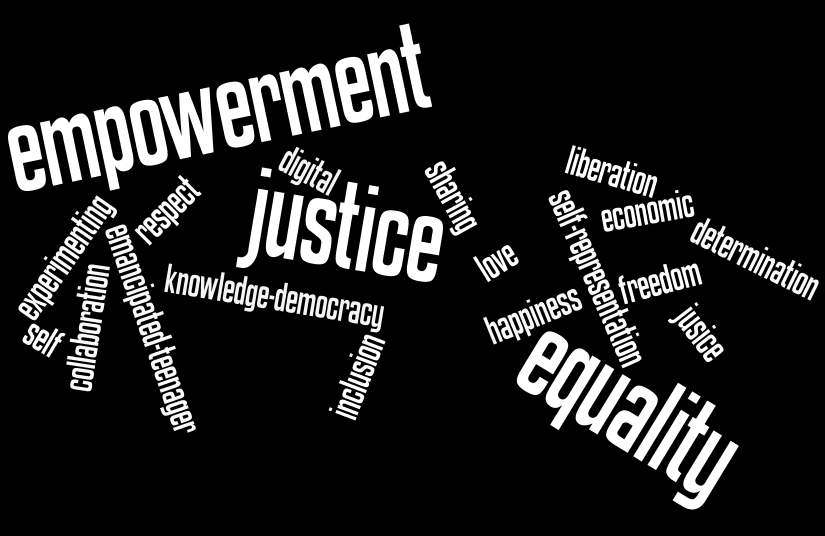
A student from the Zumix team in Codesign studio participates in a values-driven brainstorm workshop.
Project Updates
This week all the student teams visited their community partners. We spent the first half of class sharing updates and providing feedback about the four collaborative project: Zumix, the Urbano Project, REV/ The Brazilian Immigrants Center (BIC), and City Life / Vida Urbana.
- The Zumix team is designing a brainstorm session for their project with young DJs in East Boston.
- The Urbano Project team will continue to discuss how they can extend the organization’s theme “Emancipated City” to a larger audience in Boston through an interactive medium.
- The REV/BIC team is building a phone system using VOIP Drupal that will explain domestic worker rights to those who call into the platform.
- The City Life / Vida Urbana team aims to overturn the dominant narrative that states the foreclosure crisis is over, and demonstrate that people are still losing their homes.
Reading Discussion
Next, the class discussed Futurelab’s report, Designing for Social Justice. Futurelab is based in the United Kingdom and through research, school development, and workshops, is committed to developing creative and innovative approaches to education, teaching, and learning. This article begins by reviewing the frameworks of John Rawls, Amartya Sen, Friedrich Hayek, and Donald Schon to show how policy-makers and philosophers understand social justice. From there, it discusses user-centered design processes and outcomes, and the implications for social justice. Students shared their reflections about the reading.
“Design is not just a matter of producing a result, but reproducing certain values…and in the long term, the process and outcome are equally important,” said one student. Another responded by describing his personal experience, “I have been in a lot of organizations where too much emphasis is on the process and people burn out and leave and there is no relevant product. There’s a tension between social justice, design, and approaches that are more corporate and top-down. There is something to learn from both sides.” In general, there are two main arguments about why you make design processes participatory:
- You get a better product when you engage the users and a large number of people. How else do you gather requirements and test usability?
- The value-driven argument is that the knowledge of all people is important and the process is more egalitarian.
The professor urged students to think critically about the outcomes of participation in their own team projects. “Sometimes process and outcome are not related.” Really good processes can yield terrible products and sometimes closed, top-down processes can produce amazing products. He explained that for the codesign studio, it is important for everyone to think about each stage of the design process and who is engaged at every step. There are the staffs of the community organizations and then there’s the “community members” themselves. What is the flow, process, and intention in each step of the process?
Values-Driven Brainstorm Workshop
After discussing the reading, teaching assistants Willow and Becky led an amazing workshop about values-driven design and showed the class how to uncover personal values. Everyone formed groups of two and followed the below directions.
- Share something you’ve worked on that you had some role in designing. Ask each other the following questions:
- What did you envision as success for that project?
- Imagine that it WAS a success. What is happening in the world then? How are people living, what is the quality of life?
- Drill to one word. That’s the value you were working from and the value you represent.
Below is a wordle of the values that our class embodies.
Then each student team and their community partners came together to think about the Inputs, Outputs, Outcomes, and Impact of their proposed projects. An input refers to what each team has such as people, materials, space, and assets and an output is the idea, concept, project, action or product that the team will create. An outcome is a momentary shift and impact is a lasting change.


